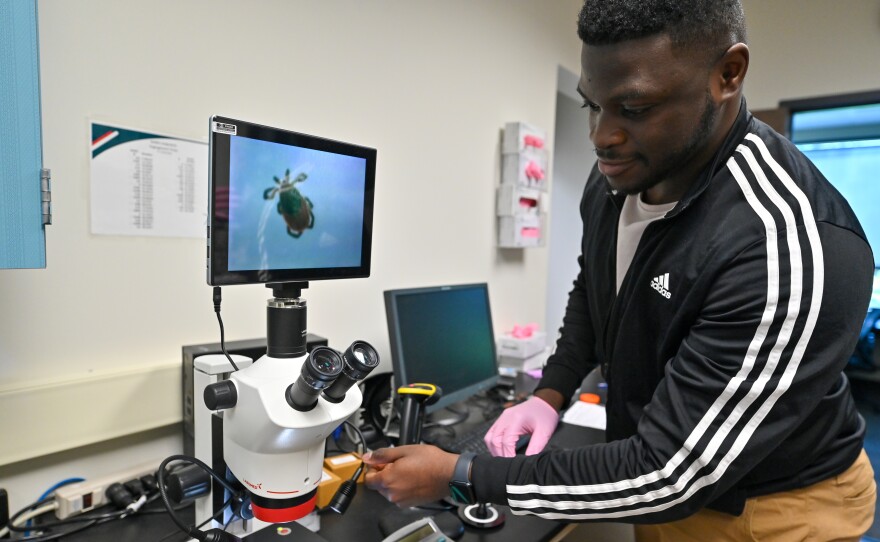The smaller the bug, the bigger the problem.
Inside the Pennsylvania Tick Research Lab at East Stroudsburg University technicians hold up plastic sandwich bags to search for a tiny dark speck.
“Sometimes finding these ticks are really difficult," a technician said.
The lab tests ticks sent in by people across the state and beyond. They break down the tiny arachnids and test its DNA for a host of diseases, including Lyme.
"We are in a very endemic state for ticks and we need to make sure we're checking ourselves, our pets and our loved ones," said Nicole Chinnici, director of the Dr. Jane Huffman Wildlife Genetics Institute at the university. The tick lab is part of the institute. They also have a lab in Western Pennsylvania.
“We're looking at what types of ticks are in our environments, how frequently individuals are being exposed and then what diseases are associated with these different regionals areas across Pennsylvania," she said.
Ticks are just one of the many creepy crawlers that are more prevalent in the warmer months. Spotted Lanternflies and Cicadas also have reputations in Northeastern Pennsylvania.
Most people will be bitten by a tick in their own backyard, said Chinnici. It’s important to check yourself and your clothes after being outside.
"If you're bitten by a tick you want to remove that tick correctly," she said. "Use fine point tweezers, grabbing at the base of the mouthparts, pulling straight up and out.”
Then, mail it or drop it off to the tick lab.
The lab is currently testing around 300 ticks a day for over 25 different tick-borne diseases. If the arachnid that bit you carries bacteria, that could help a physician plan out treatment. Most diseases start with an immune system reaction, including fever, chills and headache, she said.
They have received black legged ticks, the Lone Star Tick and dog ticks. Chinnici said they are keeping an eye on the spread of the Lone Star Tick.
"They do bring another association with more diseases and other diseases that can be a little bit more serious in the human population," she said.
Ticks survive off blood meals. They pick up diseases while they’re sucking the blood from wildlife across the state. The pest and the animals can handle the bacteria — humans not so much.
Chinnici said Pennsylvania is the number one state for tick exposures. The 8-legged creature is resilient. They like all four seasons and can survive through the winter months.

Another summer pest is the Spotted Lanternfly. The plant hoppers are not a threat to human health, but can destroy plants and backyard furniture. They love woody, leafy vines and survive on a diet of sap from the plants.
The invasive bug has officially been in Pennsylvania for 10 years. They’re thought to have come to Philadelphia on a shipping container from Southeast Asia and were first spotted in Berks County 2014.
"If you see them, eliminate them, but most importantly don't move them around," said Jill Baer, the Penn State Extension Master Gardener Coordinator for Lackawanna and Luzerne counties.
The lanternflies stink at flying and hitch rides. Experts ask that people check their vehicles before leaving the state and even their counties. All but 15 counties in Northern Pennsylvania are considered quarantined.
As the bug gets bigger, they get less harmful.
Pennsylvania will be spared from a once in a lifetime doubling hatching of cicadas. The periodical cicadas will come out mostly in the Midwest.
"So in our neck of the woods, it'll be pretty much a standard year for cicadas," said Baer.
The annual cicadas are called Dog Day Cicadas. They’ll emerge in late July or August.
"Cicadas don't bite or sting. They're really all business. Once they've emerged from the ground, they are all about finding that mate laying those eggs. And they're really like, they're really 100% disinterested in us," she said.
Baer said bugs of all kinds are facing a cocktail of stressors right now. While they may be pesky, and some may not so good for human's health, the creatures are important to total ecosystem health, she said.
"Our world would collapse without insects," she said.













